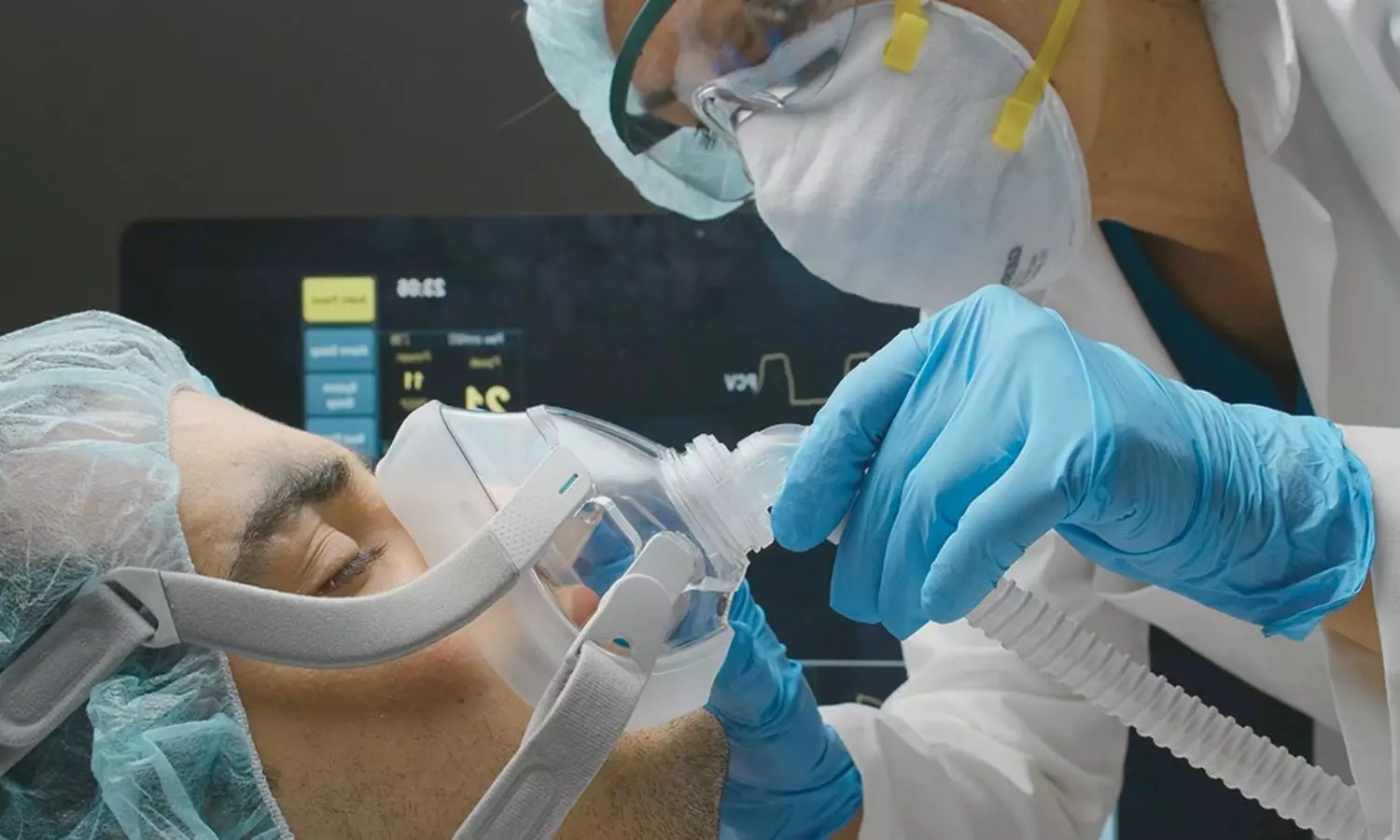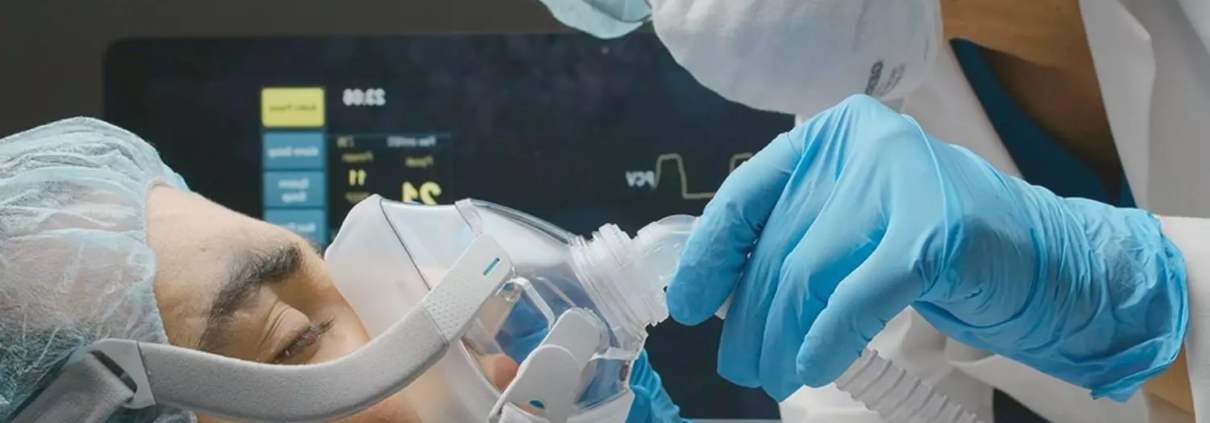Lower oxygenation target in ICU patients with COVID-19 tied to more days alive without life support: JAMA

Denmark: An arterial oxygen pressure (PaO2) target of 60 mm Hg versus 90 mm Hg led to more days alive without support in intensive care unit (ICU) patients with COVID-19 and severe hypoxemia, findings from HOT-COVID Randomized Clinical Trial have shown.
The randomized trial, including 726 patients, found that targeting a Pao2 of 60 mm Hg resulted in 80.0 days alive without support at 90 days versus 72.0 days when targeting a Pao2 of 90 mm Hg. This difference was statistically significant. The findings were published online in the Journal of the American Medical Association (JAMA) on March 19, 2024.
COVID-19 pneumonia may result in hypoxemic respiratory failure needing high levels of supplemental oxygen and intensive care. Supplemental oxygen is ubiquitously used in patients with COVID-19 and severe hypoxemia, but there remains uncertainty about the effects of higher versus lower oxygenation strategies.
To fill this knowledge gap, Frederik M. Nielsen, Aalborg University Hospital, Aalborg, Denmark, and colleagues aimed to assess the effects of targeting a Pao2 of 60 mm Hg versus 90 mm Hg in patients with COVID-19 and severe hypoxemia in the ICU.
For this purpose, the researchers conducted a multicenter randomized clinical trial comprising 726 adults with COVID-19 receiving at least 10 L/min of oxygen or mechanical ventilation across 11 ICUs in Europe from 2020 to 2023.
The trial was stopped prematurely before the outcome assessment due to slow enrollment. The end of the 90-day follow-up was June 1, 2023.
Patients were randomized in a 1:1 ratio to a Pao2 of 60 mm Hg (lower oxygenation group; n = 365) or 90 mm Hg (higher oxygenation group; n = 361) for up to 90 days in the ICU.
The primary outcome was the number of days alive without life support (kidney replacement therapy, circulatory support, or mechanical ventilation) at 90 days. Secondary outcomes included a proportion of patients with serious adverse events, mortality, and number of days alive and out of hospital, all at 90 days.
The following were the study’s key findings:
- Of 726 randomized patients, primary outcome data were available for 697 (351 in the lower oxygenation group and 346 in the higher oxygenation group). The median age was 66 years, and 68% of patients were male.
- At 90 days, the median number of days alive without life support was 80.0 days in the lower oxygenation group and 72.0 days in the higher oxygenation group.
- Mortality at 90 days was 30.2% in the lower oxygenation group and 34.7% in the higher oxygenation group (risk ratio, 0.86).
- There were no statistically significant differences in the proportion of patients with serious adverse events or the number of days alive and out of hospital.
“Targeting a Pao2 of 60 mm Hg resulted in more days alive without life support over 90 days than targeting a Pao2 of 90 mm Hg in adult patients in the ICU with COVID-19 and severe hypoxemia,” the researchers concluded.
Reference:
Nielsen FM, Klitgaard TL, Siegemund M, et al. Lower vs Higher Oxygenation Target and Days Alive Without Life Support in COVID-19: The HOT-COVID Randomized Clinical Trial. JAMA. 2024;331(14):1185–1194. doi:10.1001/jama.2024.2934



